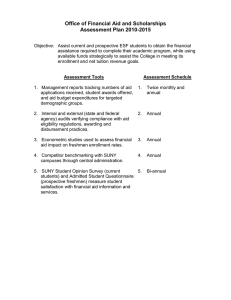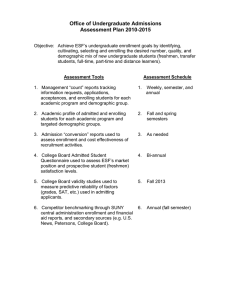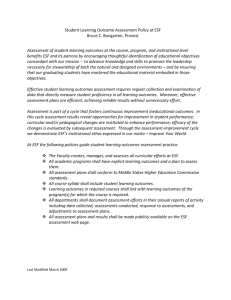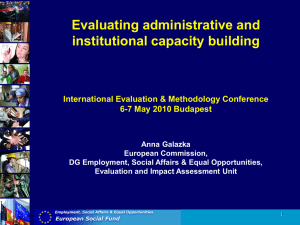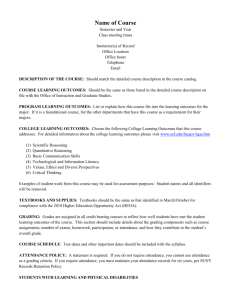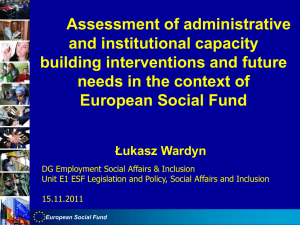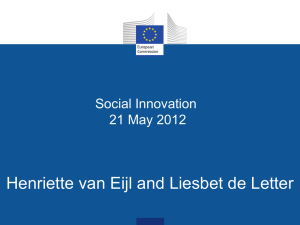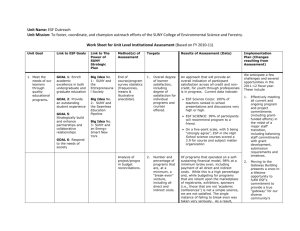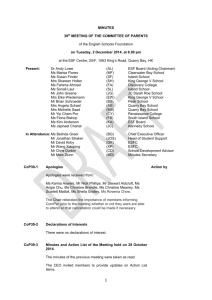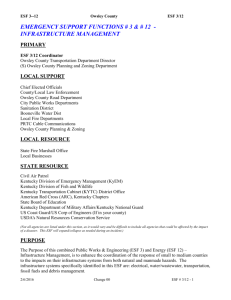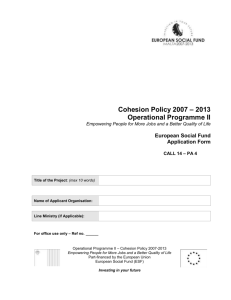Enrollment Management and Marketing Division
advertisement
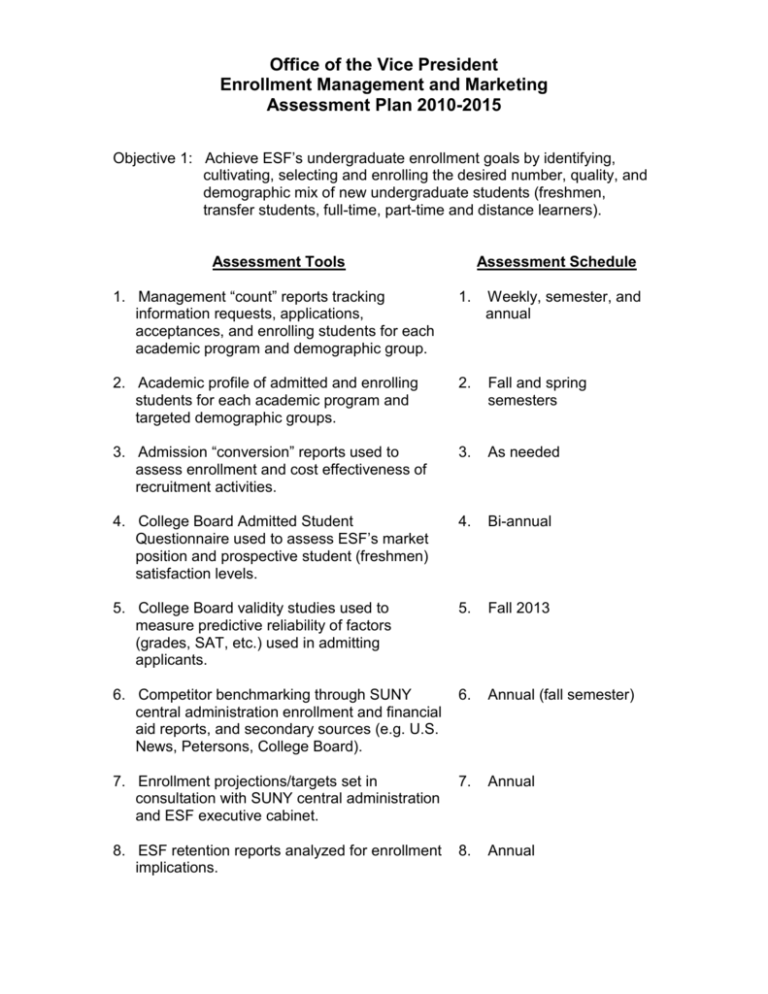
Office of the Vice President Enrollment Management and Marketing Assessment Plan 2010-2015 Objective 1: Achieve ESF’s undergraduate enrollment goals by identifying, cultivating, selecting and enrolling the desired number, quality, and demographic mix of new undergraduate students (freshmen, transfer students, full-time, part-time and distance learners). Assessment Tools Assessment Schedule 1. Management “count” reports tracking information requests, applications, acceptances, and enrolling students for each academic program and demographic group. 1. Weekly, semester, and annual 2. Academic profile of admitted and enrolling students for each academic program and targeted demographic groups. 2. Fall and spring semesters 3. Admission “conversion” reports used to assess enrollment and cost effectiveness of recruitment activities. 3. As needed 4. College Board Admitted Student Questionnaire used to assess ESF’s market position and prospective student (freshmen) satisfaction levels. 4. Bi-annual 5. College Board validity studies used to measure predictive reliability of factors (grades, SAT, etc.) used in admitting applicants. 5. Fall 2013 6. Competitor benchmarking through SUNY central administration enrollment and financial aid reports, and secondary sources (e.g. U.S. News, Petersons, College Board). 6. Annual (fall semester) 7. Enrollment projections/targets set in consultation with SUNY central administration and ESF executive cabinet. 7. Annual 8. ESF retention reports analyzed for enrollment implications. 8. Annual Objective 2: Assist current and prospective ESF students to obtain the financial assistance required to complete their academic program, while using available funds strategically to assist the College in meeting its enrollment and net tuition revenue goals. Assessment Tools Assessment Schedule 1. Management reports tracking numbers of aid applications received, student awards offered, and aid budget expenditures for targeted demographic groups. 1. Twice monthly and annual 2. Internal and external (state and federal agency) audits verifying compliance with aid eligibility regulations, awarding and disbursement practices. 2. Annual 3. Econometric studies used to assess financial aid impact on freshmen enrollment rates. 3. Annual 4. Competitor benchmarking with SUNY campuses through central administration. 4. Annual 5. SUNY Student Opinion Survey (current 5. students) and Admitted Student Questionnaire (prospective freshmen) measure student satisfaction with financial aid information and services. Bi-annual Objective 3: Produce college publications, web pages, and other media to communicate ESF’s desired image; to provide information to prospective students, employers, and other external audiences; and to support the communication needs of other academic and administrative department at ESF. Assessment Tools Assessment Schedule 1. Management reports track the number of publications and other media produced within client’s desired schedule and cost. 1. Annual 2. College Board Admitted Student Questionnaire provides specific measures of the institutional image provided to admitted 2. Bi-annual freshman applicants through ESF publications and website. 3. Communications awards given by affiliated professional organizations (e.g. CASE, SUNYCUAD). 3. Annual Objective 4: Increase the general awareness and visibility of ESF through an effective news and media relations program. Assessment Tools 1. Management reports track attainment of ESF metrics for: Assessment Schedule 1. Midyear and annual a. column inches of press; b. mentions in national media; c. mentions in state/local media; d. special ESF events; e. print and web advertising; f. television and radio advertising; g. television and radio coverage (news); h. college publications produced; i. news releases and reporter contacts; j. web hits from external audiences; k. users on ESF social networking sites. Objective 5: Offer an intercollegiate athletics program that supports the academic mission of the College and contributes to the quality of student life on campus. Assessment Tools Assessment Schedule 1. Number of student-athletes participating in intercollegiate athletics. 1. Annual 2. Number of teams qualifying for post-season championship competition (NAIA, USCAA, or affiliated league championships). 2. Annual 3. Computed year end grade point average for student athletes. 3. Annual Objective 6: Contribute directly to the achievement of ESF’s diversity goals, and to enhancing the diversity and quality of ESF’s educational environment. Assessment Tools 1. A large majority of the assessment tools used by the EM&M Division (listed above) provide specific information used to assess our success in attracting and serving diverse student populations. Assessment Schedule 1. 2. Employee data is examined by Vice President 2. and directors regularly to assess progress in diversifying our Division’s workforce. As identified above Ongoing
